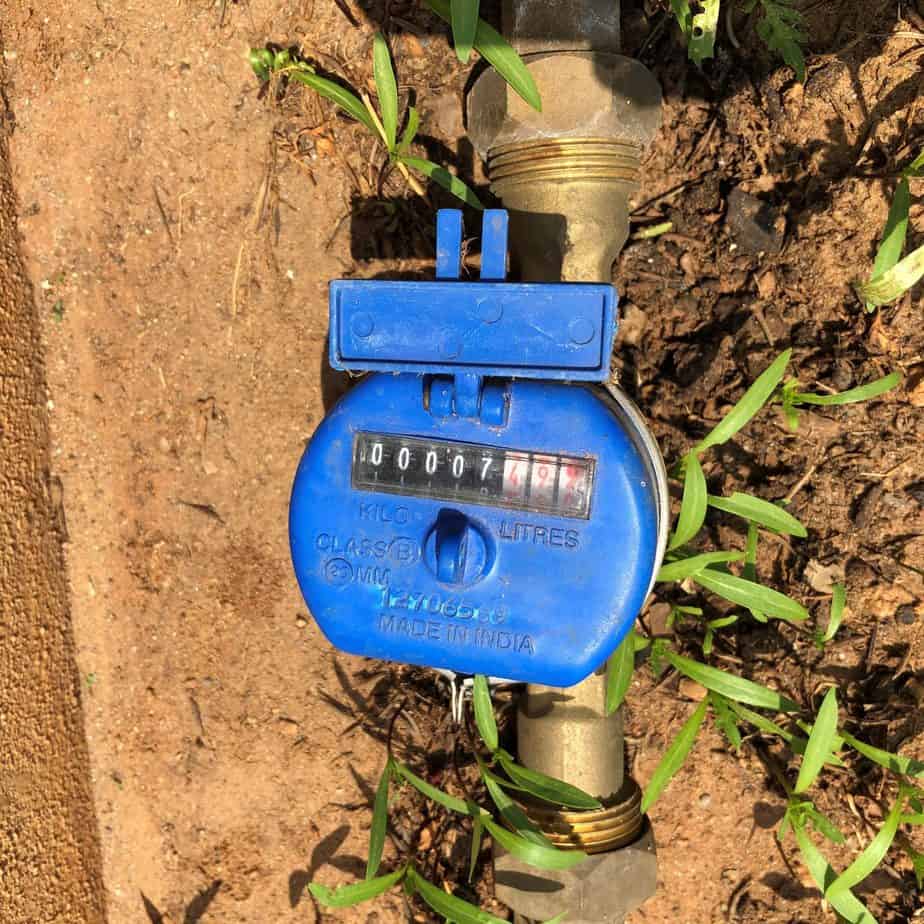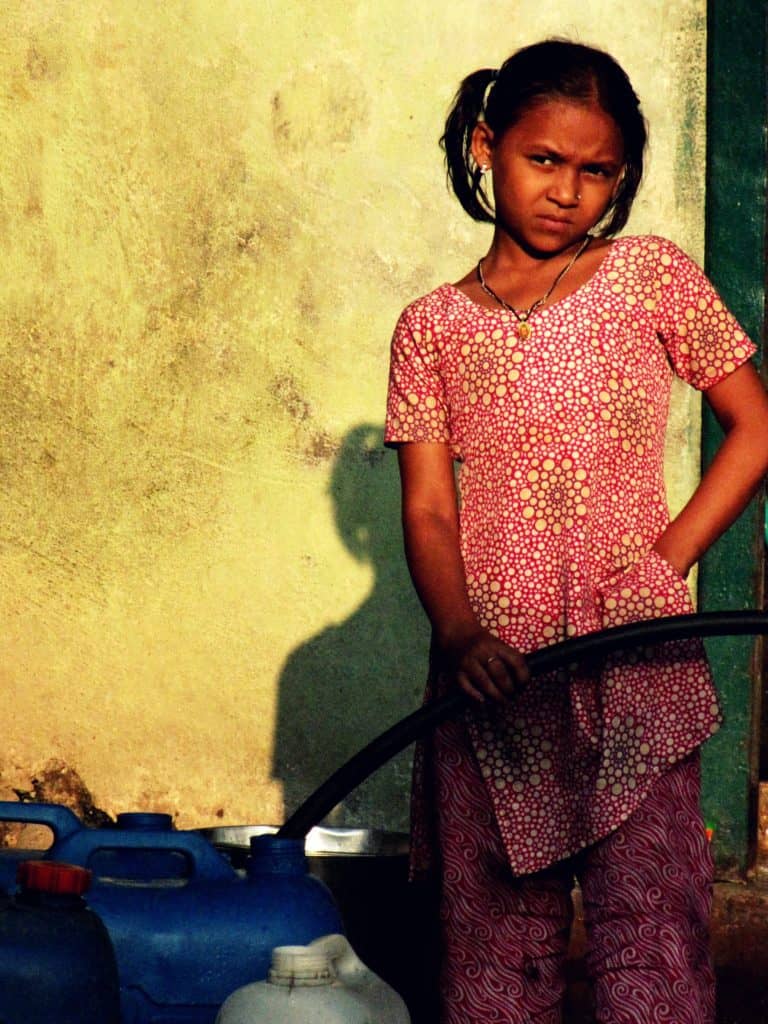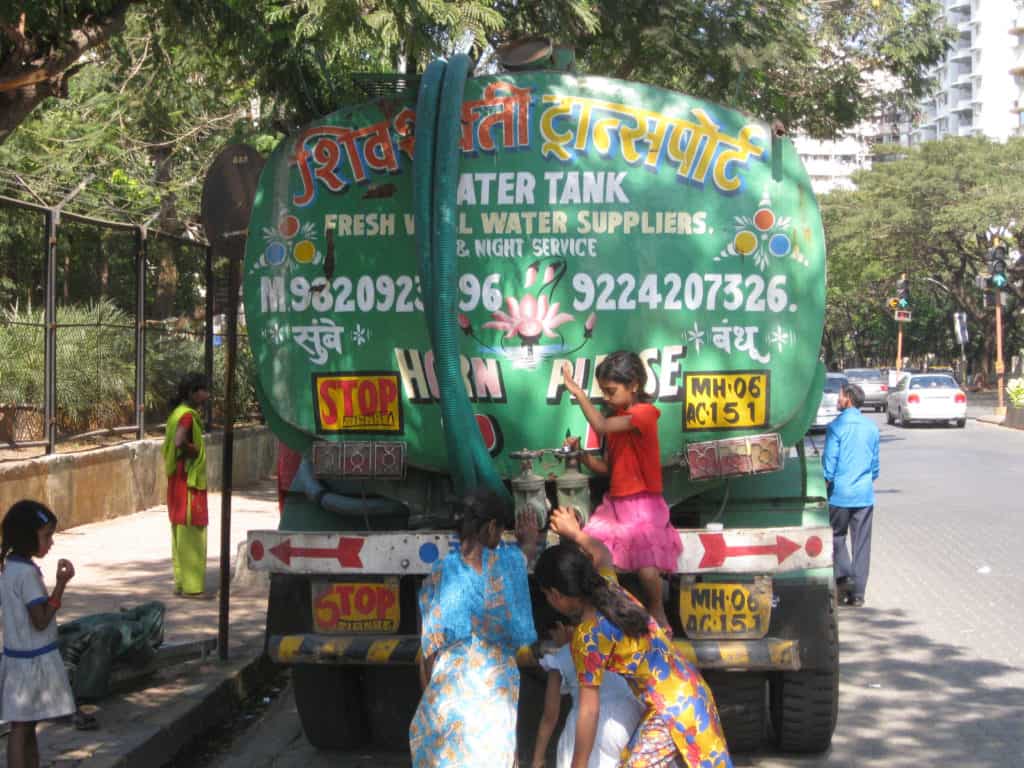Water is fundamental for our survival, yet is also limited in availability. For Mumbai, the Brihanmumbai Municipal Corporation (BMC) diverts over 4000 million litres of water a day to the city from lakes as far as 163 km away. Partially transported by gravity, it is then treated, stored and pumped up to reach homes. This costs the municipality Rs 19.44 for every 1,000 litres. But what are the water rates that Mumbaikars are burdened with?
When it comes to putting a price on water, a balance must be struck between affordability and offsetting service costs. This materialises in BMC’s differing rates for consumers, with housing as the deciding factor. The official charge for residences is Rs 5.94 per kilolitre, while informal settlements pay Rs 4.44 per kilolitre.
Yet, informal practices and bureaucratic hurdles rule the roost when it comes to informal settlements, which make up 42% – 55% of the city. Municipal water supply does not reach those outside this system: the homeless and ‘encroachers’. Almost two million in number, they lack legal water connections. They are left to fend for themselves, and often tap into unauthorised connections, or buy from private vendors at exorbitant rates.
The result is that the poorest end up paying the most for the least quantities of water, spending upwards of 8% of their meagre income on the basic need, according to a report by Pani Haq Samiti, a water rights committee.
Breaking down the water bill

The rate of Rs 5.94 per kilolitre extends only upto a certain limit – 150 litres per capita per day (lpcd). This is the amount recommended by the Central Public Health and Environmental Engineering Organisation (CPHEEO).
“We assume a family size of 5 people, with which we calculate the amount required per household,” says an engineer in the hydraulic department of the BMC. This extends the base rate to 750 litre a day for each household. Any use above the amount is charged a higher rate, increasing by 5.94 with every 50 litre increment. Any volume over 250 litres, will cost four times the base – Rs 23.8 per kilolitre.
However, the typical consumers’ water bill does not show a direct correlation between consumption and cost, for the simple reason that most individual connections are not metered. Individual meters, which need to be connected to each water inlet, are a rarity due to their added expense and maintenance. Nor is it convenient, according to a hydraulic engineer in the BMC, to generate so many individually calculated bills.
Instead, everyone in a housing society is billed the same way. Water meters are installed at the building or housing society level and the bill is evenly split, making no concessions for individual households that consume less. (Previous readings or estimated water requirements make do in the case of a non-functional meter. This is more the norm, given that 70% of the meters are said to be non-functional)
The apartment RWA in turn charges the resident, often based on the number of water inlets in their premises. For each water inlet, Arathi Manay, a resident of Whispering Palms CHS in Kandivali, pays Rs 80/month per inlet, four in all. A total of Rs 320/month is stacked onto her maintenance bill.
4% of older water connections in the city are non-metered, and pay a ‘cost for service’ as a part of their property tax (0.253% of capital value), as opposed to a ‘cost for amount’.
Disparity in water rates between formal housing and informal settlements

Dhanraj Patel lives with his family of five in Ketkipada in Dahisar. A notified slum (pre-2000), its inhabitants are entitled to legal water, electricity and gas connections. One metered water tap is shared among each cluster, providing water for 10 households.
When water flows, from 10:30 to 11:30 PM, the residents fill the blue drums, jerry cans and buckets stored in the narrow corridor outside their doors in a pre-decided order. As Dhanraj fills first, he has to let some water run waste till it turns clear. Their collective three-month water bill ranges from Rs 1400-2400. Dividing it among themselves, their monthly cost comes to Rs 50-80.

Slum residents, however, are eligible for only 45 litre per capita per day. Accounting for the five members in a household, Dhanraj’s consumption for the month totals 6,750 litres, which is supposed to cost Rs 29.97 as per BMC’s official rate.
Dhanraj finds the quantity supplied usually sufficient for his family. But the amount is woefully short of the benchmark for urban water supply, set at 135 litre per capita per day by the Ministry of Housing and Urban Affairs (MoHUA). The reason, according to an engineer in the hydraulic department, is the reduced storage capacity and the limited requirements of slum residents.
If Dhanraj’s intake were to match the benchmark, the difference – would have to be met through tankers. Tankers charge a minimum of Rs 200 per kilolitre. This would cause his expense to jump by Rs 540 per person, totalling Rs 2700.

Access to water
In 2014, a Bombay High Court judgement upended the usual flow of things. In accordance with Article 21 of the Constitution, it declared, the right to life was incomplete without the right to water. It directed the BMC to amend its policy and provide water to all, regardless of the legality of residence.
Despite this, an estimated 2 million people are denied legal access to water. The homeless, those ‘occupying’ land owned by the central government, parastatals, or private entities are excluded because they are expected to furnish a NOC from the respective authority – an impossible ask. Administrative and political hurdles continue to derail the now notified slums. Pani Haq Samiti (PHS), an organisation fighting for universal access to water, has filled 1,200 applications on behalf of 6,000+ families since 2017. Only 96 have been successful so far.
In the meantime, people have little choice but to rely on informal and unreliable sources for water: neighbours or workplaces, natural sources, leaks in pipes, or illegal connections. When these options fall short, they turn to tanker trucks or bottled water.
Read More: 40% of Mumbai’s water is lost: How can water leaks be fixed?
Taking Siddarth Nagar in Andheri as an example, a 2018 report by WRI found that tanker trucks made up more than 60% of their supply. This worked out to 52 times the cost of piped water.
Ajuma ‘Khala’ Bi, a resident of the Maharashtra Nagar slum in Mankhurd, gets her water primarily from different houses in a neighbouring slum a 10-minute walk away. She pays them Rs 300-500/month in all, for which she is allowed to fill around 8 cans of 40 litres each, on a daily basis. Her husband or children lug the 320 litres by cycle every night. This works out to an average of Rs 42 per kilolitre.
Despite the proximity to slums with a metered water connection, her home is considered ‘illegal’ for being on railway land. Others in her basti, she tells me, depend on the water mafia, whose rates start at Rs 400/month for a family of four. They receive an even lesser quantity, 6-10 bottles of 20 litres. This works out to an average of Rs 95 per kilolitre.
Pani Haq Samiti has found 62 such communities that are denied a legal water connection. In a November 2020 report taking stock of water and sanitation post-lockdown, it found households here receive an average of 30.41 litre per capita per day, for Rs 710.88 a month – a whopping 35 times the official rate.
At the end of the day, 16% of Mumbai’s population, likely the poorest, get the shorter end of the stick on both sides.
| Consumer | Slab / per capita consumption | Rate per 1000 litres |
| Residences – Piped supply | 150 lpcd | Rs 5.94 |
| Residences – Piped supply | 150-200 lpcd | Rs 11.88 |
| Residences – Piped supply | 200-250 lpcd | Rs 17.82 |
| Residences – Piped supply | 250+ lpcd | Rs 23.76 |
| Slums – Piped supply | 45 lpcd | Rs 4.44 |
| Slums – Groundwater supply by | 45 lpcd | Rs 4.93 |
| Tanker (private suppliers) | – | Rs 200-700 |
| Informal sources, like neighbours | – | Rs 42 avg |
| Non-authorised informal sources | – | Rs 95 avg |
| Residences in buildings without Occupancy Certificate | Same as regular residences | Double the standard residence rates |
BMC’s water supply charges
Is there really water scarcity?
Technically, there needn’t be any disparity in water supply between people of different classes, because Mumbai gets enough water for sufficient equitable distribution. If the volume coming into the city (3,850 MLD) is divided by the estimated population (12.87 million), each resident would be the recipient of 299 litres a day. This is more than cities like London, Singapore, and Paris receive. If we further exclude the volume lost to leaks and theft (also known as non-revenue water – 40% as of 2021), the quantity drops to 178 lpcd.
While this division is a simplification that doesn’t account for industrial and commercial uses, it is instructive in framing the problem, which lies primarily in distribution and prioritisation.